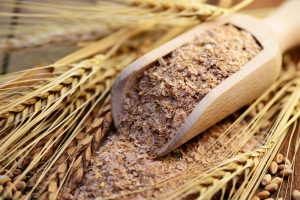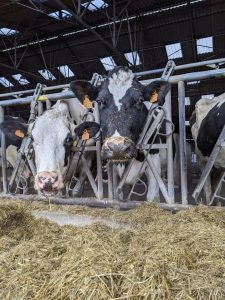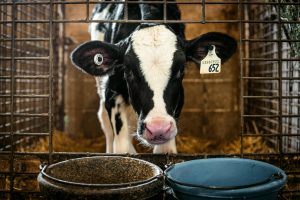María Villagrasa & Nuria García
Livestock feeding behavior has a significant impact on productivity due to several reasons. First, an increase in eating time enhances chewing, reduces feed particle size and increases digestibility.
In addition, it increases saliva production, which acts as a biological buffer in the rumen, neutralizing the pH. It has also been suggested that reducing the rate of eating (slower meals) decreases the risk of metabolic diseases such as displaced abomasum.
The combination of these effects means that the impact of eating behavior on productivity can be as important as feed intake. Previous studies have shown that the correlation between milk production and feeding behavior (time spent eating) is stronger than between milk production and feed intake.
On the other hand, feeding behavior affects milk quality, as evidenced by research where it was found that an increase in the frequency of feeding increased milk fat.
How does food restriction affect eating behavior?
Previous studies suggest that a moderate feed restriction may improve feed efficiency in cows, measured as energy-corrected milk/dry matter (DM) intake. However, studies are lacking about the effects of feed restriction on feeding behavior and milk production, questions that were addressed in a recent study (Ben Meir et al., 2019).
A total of 24 cows were assigned to two dietary treatments: ad libitum versus restricted feeding (13% less than the ad libitum intake observed during the adaptation period) of the same total mixed ration containing 36.5% forage (DM basis).
The data collected included the frequency of meals and visits to the feed bunk, the duration of each visit, the amount and duration of the meal, the distribution of feeding during day and night, feeding rate (g of DM/min), daily feeding time, and feed intake.
A visit was defined as eating at least 200 g of DM for at least 5 minutes in the feeder. When the interval between the end of one visit and the beginning of the next was less than 28 minutes, visits were considered part of a single meal.
Feed restriction reduced milk production and feeding time
Unsurprisingly, feed restriction reduced DM intake by 12.8% in restricted cows compared to ad libitum feeding. Milk production in cows with feed restriction was 7.7% lower than that of cows fed ad libitum (37.1 vs. 40.2 kg/d). Milk fat was higher in restricted cows (3.72 vs. 3.51%), while energy-corrected milk (35.7 vs. 37.7 kg/d) production was lower.
The reduction in feed intake was reflected in a 9.8% shorter daily feeding time (170 vs. 188 minutes/day) and a 9.5% decrease in the number of visits to the feed bunk (7.86 vs. 8.69 frequency/day) and feeding bouts (5.16 vs. 5.73 per day) in restricted compared to ad libitum fed cows. However, the feeding rate, amount of feed consumed, and meal duration all remained similar.
Cows had 4 to 5 meals (peaks) during the day and 1 to 2 additional meals at night in both dietary regimes. Likewise, the start of the main feeding peaks was triggered by external events, including the distribution of feed or the return after each milking. A similar daytime pattern of 6 or 7 meals in response to the same external events has been found in previous studies and reflects a social effect of the herd at the start of the meals for each individual cow.
Feed restriction also affected resting time since the time spent lying in cows fed ad libitum was 7.3% larger than in restricted cows (603 vs. 562 m/d).
In summary, feed-restricted cows spent less time eating and had a lower frequency of meals and visits to the feed bunk. Likewise, the time they spent lying, which is an indicator of animal welfare, was less than in the cows fed ad libitum.
Reference
Y. A. Ben Meir, M. Nikbachat, Y. Portnik, S. Jacoby, H. Levit, D. Bikel, G. Adin, U. Moallem, J. Miron, S. J. Mabjeesh, I. Halachmi. Dietary restriction improved feed efficiency of inefficient lactating cows. 2019. J. Dairy Sci. 102:8898–8906.
© 2021 Dairy Knowledge Center. All Rights Reserved.









